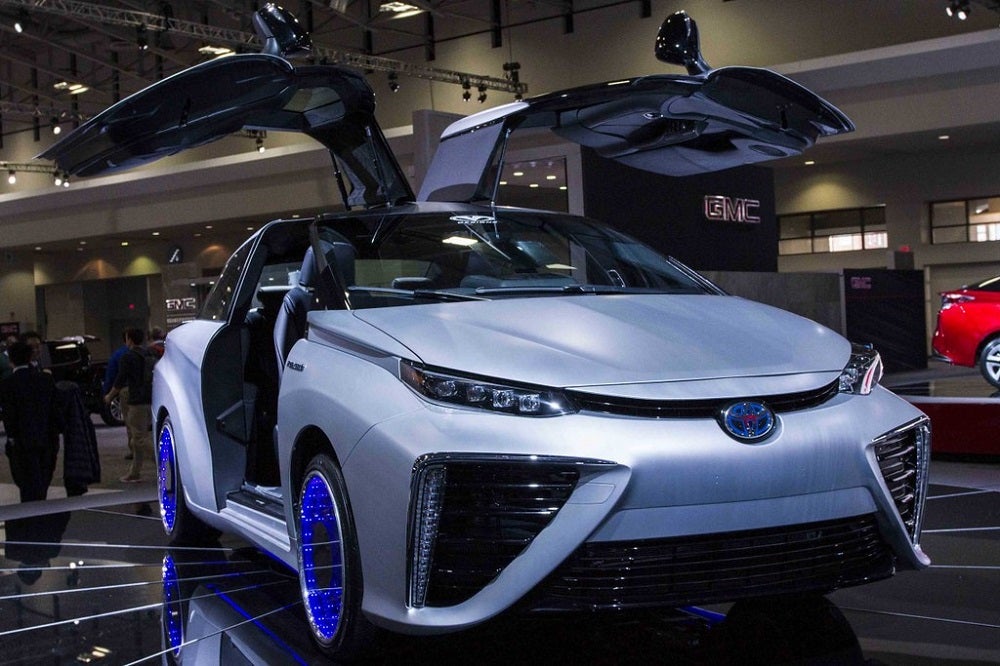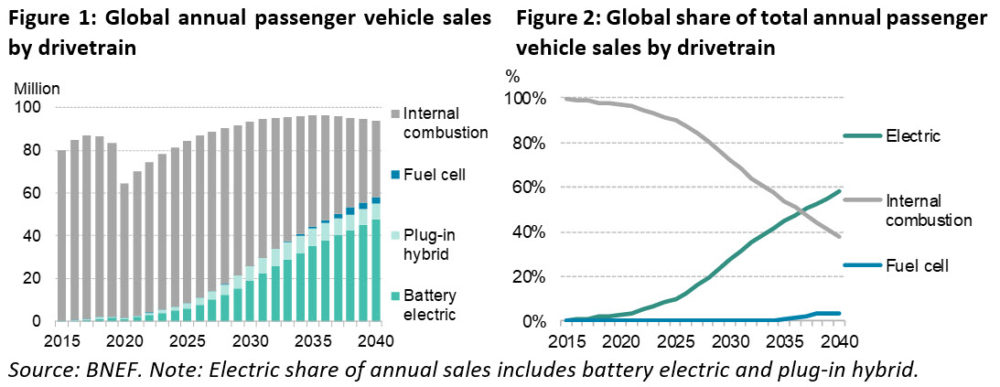
Sales of electric vehicles are set to fall this year as the coronavirus pandemic hits the automotive market, according to BloombergNEF.
The report, released today (19 May), predicts global EV purchases will drop by 18% to 1.7 million in 2020 – with the pandemic “interrupting 10 successive years of strong growth”.
However, the Long-Term Electric Vehicle Outlook research notes that sales of combustion engine cars are set to drop even faster this year by 23%, while the long-term electrification of transport is projected to accelerate in the years ahead.
Colin McKerracher, head of advanced transport for BNEF, said the coronavirus crisis is set to “cause a major downturn in global auto sales in 2020”.
“It is raising difficult questions about automakers’ priorities and their ability to fund the transition,” he added.
“The long-term trajectory has not changed, but the market will be bumpy for the next three years.”
The long-term outlook for electric vehicles after coronavirus
BNEF’s data shows that electric models will account for 58% of new passenger car sales globally by 2040, and 31% of the wider car fleet.
It believes EV’s will also make up 67% of all municipal buses on the road in 20 years, alongside 47% of two-wheelers and 24% of light commercial vehicles.
These figures have major implications for oil and electricity markets, as transport electrification, particularly in the form of two-wheelers, is already taking out almost one million barrels of oil demand per day — and, by 2040, it is predicted to remove 17.6 million barrels per day.
EVs of all types are expected to add 5.2% to global electricity demand by 2040, according to BNEF.
It suggests worldwide sales of internal combustion engine (ICE) cars peaked in 2017 and will “continue their long-term decline after a temporary post-crisis recovery”.
For the first time, BNEF expects overall new passenger vehicle sales to peak in 2036 as changing global demographics, increasing urbanisation and more shared mobility outweigh the effects of economic development – but the fleet size will continue to grow.
The data highlights that EV’s will account for 3% of global car sales in 2020, rising to 7% in 2023 – equivalent to 5.4 million units.

As the price of lithium-ion batteries continues to decline, the lifetime and upfront costs of an electric car will ‘cross over’ with their ICE equivalents in about 2025, on average.
But BNEF believes the timeframe will “vary greatly depending on the market”, with 2022 expected for large cars in Europe and 2030 or later for smaller vehicles in India and Japan.
It predicts hydrogen fuel-cell technologies will account for 3.9% of heavy-duty commercial vehicle sales and 6.5% of municipal bus sales globally by 2040 — with higher shares in East Asia and parts of Europe.
But the report notes that fuel cells are not expected to encroach far into lighter-duty commercial or passenger car markets.
It predicts autonomous vehicles or “robotaxis” will start to play a “much larger role” in the late 2030s, aided by the increasing deployment of advanced driver assistance systems and the build-out of sensor supply chains.
Charging infrastructure will need to be scaled-up considerably
With a mass scale-up on charging infrastructure required to accommodate the growing EV fleet, Aleksandra O’Donovan, head of electrified transport for BNEF, estimates the world will need about 290 million charging points by 2040 — including 12 million in public places, with a cumulative investment of $500bn.
The report highlights that home, workplace and private commercial charging will account for 78% of the investment.
Meanwhile, investment in public charging infrastructure is viewed as a cumulative $111bn across all countries by 2040.
BNEF believes most of this can be provided profitably by the private sector as utilisation rates rise in the 2020s – but government support may be needed in some regions.
There are currently more than seven million passenger EVs on the road, alongside more than 500,000 e-buses, almost 400,000 electric delivery vans and trucks, and 184 million electric mopeds, scooters and motorcycles on the road globally.
The majority of the e-buses and electric two-wheelers operating are in China.
As a result of the coronavirus crisis, the analysis notes that there will be more than a short-term effect on public transit as lockdowns ease.
It said there is “likely to be a lasting reduction in ridership of municipal bus and metro services”, with more traffic congestion in cities likely.
Although shared mobility operators have “suffered”, BNEF believes they will “rebound quickly” on the back of food delivery, logistics and micromobility services.






